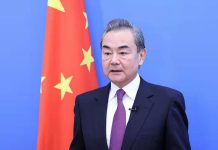BEIJING/WASHINGTON: It was a warm spring day 50 years ago. At China’s invitation, a flight with nine U.S. table tennis players on board just landed at the Beijing airport, marking a thaw between China and the United States, which had been at loggerheads for more than two decades.
Starting with what came to be known as “Ping-Pong diplomacy,” China and the United States have built one of the world’s most important and intertwined relations from almost scratch over the half a century. However, while people of the world were increasingly counting on and benefiting from China-U.S. cooperation, the former U.S. administration launched relentless assault on bilateral ties, plunging them into historic low and wiping out efforts of generations on both sides within just four years.
Now, as Joe Biden assumed the helm of the United States amid the still raging COVID-19 pandemic, China-U.S. relations are ushering in another critical moment when constructive cooperation between the two countries has never been of more urgency and significance. The past four years have seen the U.S. government under the leadership of former President Donald Trump stretch China-U.S. relations to the limits too many times. To contain the development of China, Washington’s imaginary challenger to its hegemonic position, the United States, typically portraying itself as the champion of freedom and equality, became the very force trampling on those values it touted before. Under the pretext of reducing bilateral deficit, Washington slapped tariffs on tens of millions U.S. dollars of products coming from China, initiating trades wars in a bid to maintain its economic dominance, which however incited widespread backlash from its trade partners and created a drag on its domestic economy. –Agencies






